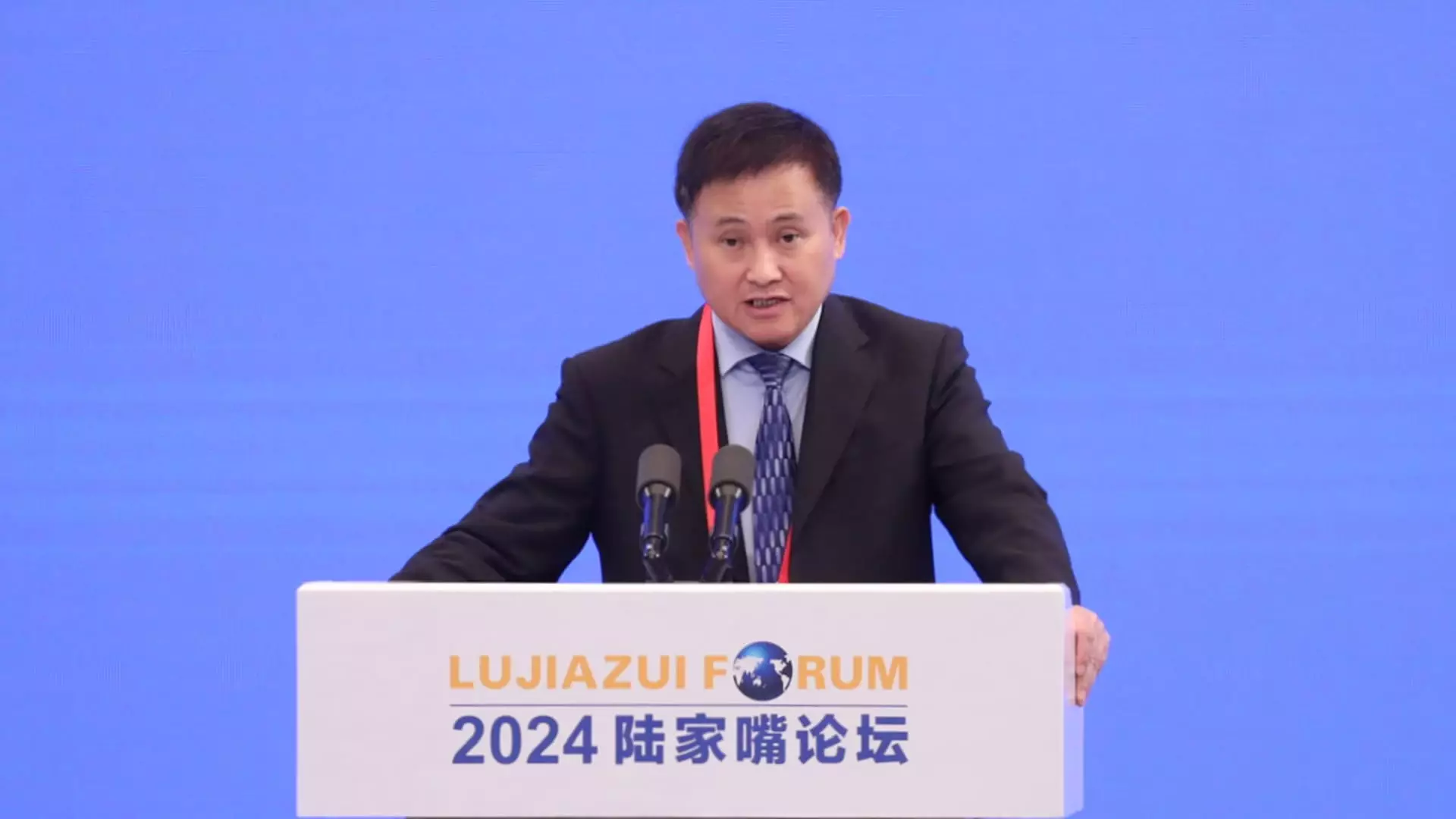In an effort to stimulate economic activity amid declining growth, the People’s Bank of China (PBOC) announced a significant reduction in the cash reserve requirement ratio (RRR) by 50 basis points. This decision, conveyed by PBOC Governor Pan Gongsheng during a rare high-level press conference, highlights the central bank’s proactive stance in navigating a challenging economic landscape. The RRR is a critical tool that dictates the amount of cash banks must hold in reserve, which in turn influences their lending capabilities and overall liquidity in the market.
Context of Monetary Easing
The announcement comes on the heels of a broader global trend toward monetary easing, spurred by recent decisions from the U.S. Federal Reserve. The Fed’s interest rate cuts have created additional leeway for countries like China to implement their own monetary adjustments to combat economic stagnation. Governor Pan hinted at potential further cuts to the RRR, suggesting a responsive strategy by the PBOC to external monetary developments while addressing domestic economic concerns.
The unprecedented drop in China’s 10-year government bond yield to a historic low of 2% following Pan’s statements signifies heightened market expectations for continued monetary easing. Such situations arise when investor confidence in long-term borrowing remains fragile, often indicative of sluggish economic activity and low consumer demand.
Reevaluating Key Interest Rates
In conjunction with the RRR reduction, Pan mentioned a possible cut in the 7-day repo rate by 0.2 percentage points, a move aimed at tweaking short-term liquidity levels. While specific timings for these changes remain vague, the governor’s commentary outlines a clear intent for greater monetary flexibility. Additional considerations regarding the loan prime rate—a benchmark that influences corporate loans and mortgages—were also introduced, with insights pointing toward potential adjustments.
Unlike the Federal Reserve, which primarily maneuvers through a singular benchmark interest rate, the PBOC employs a multifaceted approach to monetary policy, utilizing various rates to achieve desired economic outcomes. The recent inaction regarding the loan prime rate demonstrates a cautious approach, revealing that while short-term measures are taken, the overall strategy remains under active evaluation.
China’s economy faces significant headwinds, including a protracted real estate crisis and stagnating consumer confidence. As growth slows, calls for fiscal stimulus and additional monetary support have intensified among economists and financial analysts alike. The anticipated policy moves, including the r reduction of the RRR and potential alterations to various interest rates, are viewed as necessary steps toward invigorating economic activity.
Pan’s comments during the press conference echo a broader acknowledgment of the challenges at hand. With emphasis on achieving full-year economic growth targets, the Chinese government and its monetary authorities understand that immediate measures are crucial for sustaining long-term stability.
It is noteworthy that policy communications from the PBOC have become increasingly transparent under Pan’s governorship, yet actual policy changes will follow a methodical process. Unlike traditional public relations where announcements are made through media channels, the PBOC plans to publish official policy updates on its platform—a shift that underscores the evolving nature of financial governance.
Given the complexities of the interwoven global economy, the timing and sequence of these policy announcements are of utmost importance. The PBOC aims to strike a balance between prompt action and clear communication, avoiding any potential market confusion.
As the PBOC prepares to implement these changes in the RRR and evaluate interest rate adjustments, it remains crucial for analysts and policymakers to monitor the implications of these decisions on China’s economic environment. The interplay between domestic policies and international economic conditions will ultimately shape the trajectory of China’s growth, informing future strategies and the overarching narrative of its monetary policy. As the world watches closely, the implications of China’s financial maneuvers extend beyond its borders, impacting global markets in unprecedented ways.

